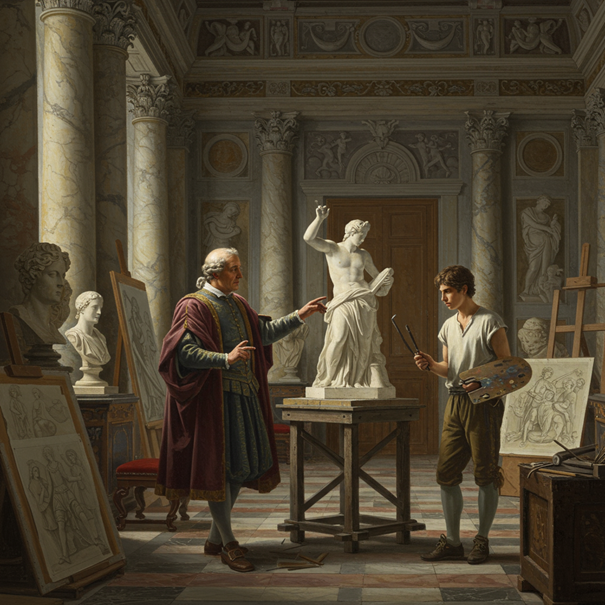Johannes Vermeer and the Poetry of the Everyday
- Lavinia de Leonis

- Aug 20
- 3 min read

The Quiet Genius
My dear readers, while the story of art is often told through the flamboyant epics of Italian masters or the theatrical power of the Flemish, there exists a genius whose renown is based not on drama, but on absolute silence. Johannes Vermeer did not paint epic battles or colossal religious frescoes. He confined himself to the intimacy of a Dutch interior to capture moments of fleeting grace. It is an art of discretion and observation, a universe where light and color transform the ordinary into a masterpiece. Today, I invite you to unravel the mystery of this master, to understand why the scarcity of his work, his alchemical palette, and his unique sensibility continue to fascinate the art world.
The Enigma of Vermeer: A Life and Work of Rarity
Vermeer is one of art history's greatest paradoxes. An artist now celebrated, whose life is barely documented. Born in Delft, in the Netherlands, in 1632, he lived and worked in relative obscurity. We know of only 35 to 37 of his works, a paltry number compared to the thousands of paintings by contemporaries like Rembrandt. This scarcity is not a weakness, but a strength. Each of Vermeer's paintings is an enigma, a fragment of an inner world that is almost entirely unknown to us. This scarcity makes every encounter with his works all the more precious and meditative.
The Alchemy of Light and Color
Vermeer's true magic lies in his extraordinary command of light and color. He was an alchemist of the palette, able to give a life of its own to the light that spreads across a map, to the softness of a pearl in an ear, or to the folds of a dress. He did not hesitate to use extremely expensive pigments, such as ultramarine blue (made from lapis lazuli), to give an unequaled depth and luminosity to his scenes. It is not only the light that is painted, but the effect of light on objects and textures, creating a palpable sense of space and time. It is this luminous quality that gives his scenes a feeling of serenity and timelessness.
The Sensibility of the Everyday
Vermeer had a unique talent for transforming the most mundane domestic scenes into moments of universal poetry. The simple figure of a young woman pouring milk or another reading a letter becomes a portal to interiority and emotion. His paintings are windows into solitude and contemplation. He does not depict action, but the moment that precedes or follows it. This profound humanity, this ability to find greatness in the ordinary, is the signature of his genius.
The Art Lover's Pilgrimage
Since his works are so rare, seeing them is a true pilgrimage. I encourage you to plan a journey to discover them.
In The Hague, the Mauritshuis houses the famous Girl with a Pearl Earring, whose enigmatic gaze has fascinated generations.
In Amsterdam, the Rijksmuseum is the proud home of The Milkmaid, an ode to humble labor and the dignity of the everyday.
In New York, the Frick Collection presents Officer and Laughing Girl, a painting that captures a joyful interaction, full of life and mystery.
Conclusion: A Legacy of Intimacy
Vermeer teaches us that the masterpiece is not always the largest or the loudest. It is the work that touches us most deeply. His legacy is not measured in the number of canvases, but in the quality of his light, the depth of his emotions, and his incredible ability to transform banality into art. When you contemplate one of his canvases, look beyond the scene and let yourself be carried away by the silence of his genius.

.png)



Comments